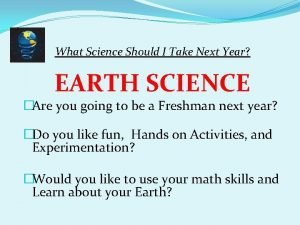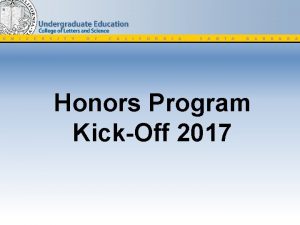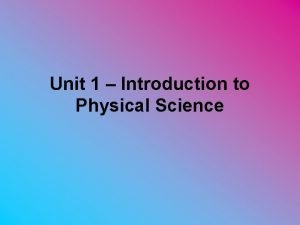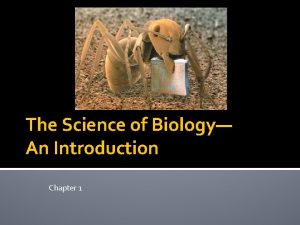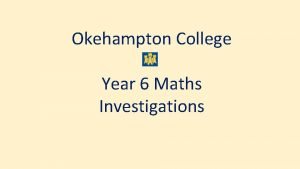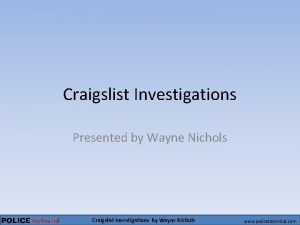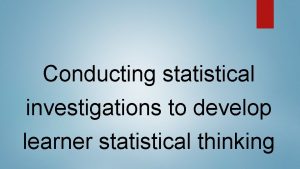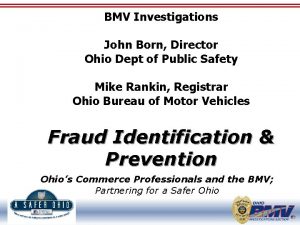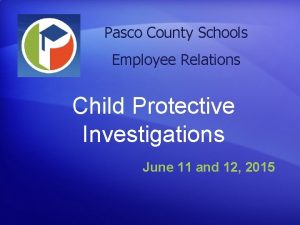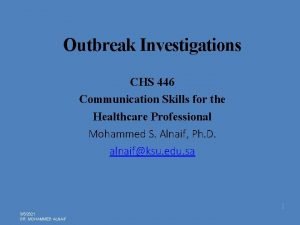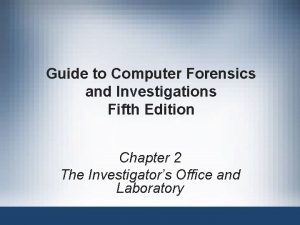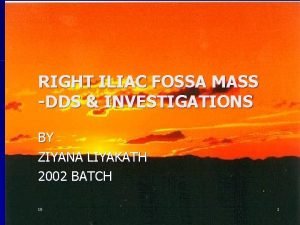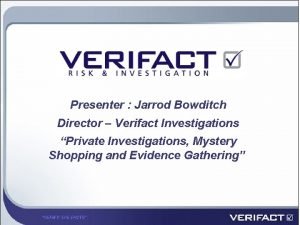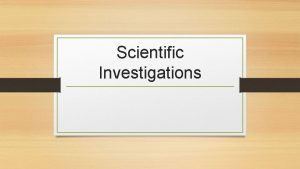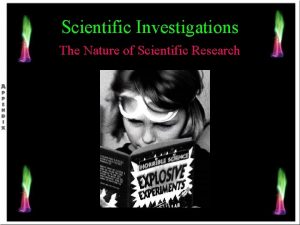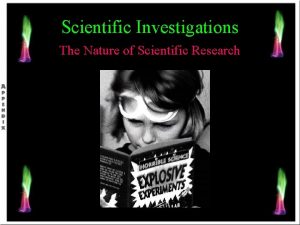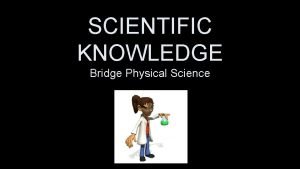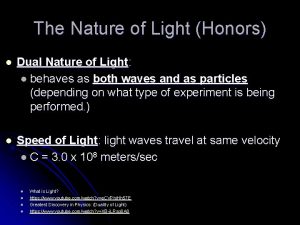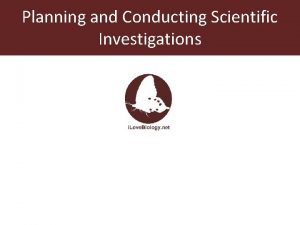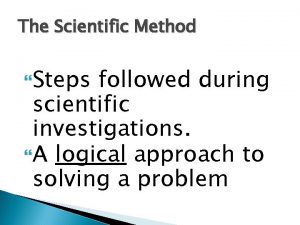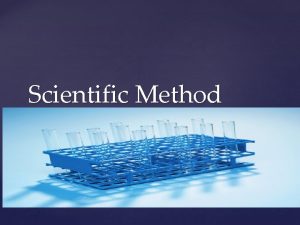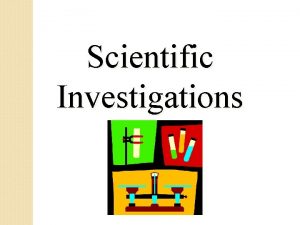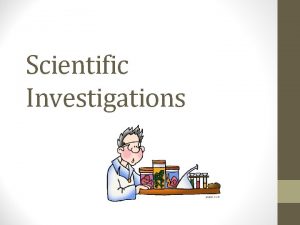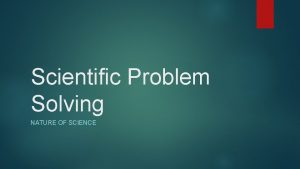Nature of Science Scientific Investigations Physical Science Honors
















- Slides: 16

Nature of Science & Scientific Investigations Physical Science Honors

Scientific Knowledge • Science is not a list of facts and information to be memorized! – Scientific knowledge grows and changes as new understanding evolves • Scientific explanations are based on EMPIRICAL EVIDENCE. – Cumulative body of observations of a natural phenomenon

Scientific Knowledge • SCIENTIFIC KNOWLEDGE is the result of: – Continuous Testing and Observation – Debate (argumentation) – Confirmation (repetition and replication) • “Consensus” is reached when an idea/explanation is generally accepted within the scientific community.

Science CANNOT Prove • Scientific knowledge is TENTATIVE (open to change) – Science cannot “prove” an explanation • This eliminates the possibility for change • Science can “support” a conclusion or theory – This is done through scientific CONFIRMATION • REPETITION & REPLICATION

Scientific Theories & Laws • Many people have the MISCONCEPTION that a theory is a scientific idea that will become a law when it is proven… –This is INCORRECT! • Scientific theories DO NOT become scientific laws! NEVER…ever –theories and laws are two different things!

SCIENTIFIC LAW • A statement that DESCRIBES what happens in nature consistently under a specific set of conditions. • A law will tell you what is expected to happen every time under those conditions. • A law will NOT tell you why it happens. • Ex: The Law of Gravity – On Earth, in the absence of an applied force, objects will fall toward the center of the Earth.

SCIENTIFIC THEORY • An EXPLANATION of a natural phenomenon that is well supported by a substantial amount of testing and confirmation. • A theory will tell you WHY something happens (our best attempt at an explanation given what we currently know) • Theories are used to explain laws. • Ex: Theory of Gravity – Unequal distribution of mass causes a curvature of space-time which results in an apparent “attraction” between two objects with mass, often described as the “force” due to gravity.

Theory vs. Law • So… – Scientific LAWS describe WHAT happens – Scientific THEORIES explain WHY it happens • Sometimes, competing theories offer different explanations for the same law. – What happens then? • Further testing & confirmation, debate • If contradictory evidence is confirmed, a theory can be modified to fit the new evidence. Because theories are so wellsupported, it is rare that they are completely discarded.

SCIENTIFIC MODELS • Scientists often use MODELS as a representation of an idea, object, or process. – 3 -D representation – 2 -D diagram – Physical Analogy – Theoretical Analogy or Metaphor

Scientific Models • BENEFITS – Money – Safety – Opportunity/Convenience – Communication • LIMITATIONS – Can Create Misconceptions – Can Introduce Error – Often Based on Assumptions

So…What IS Science? • SCIENCE is a limited discipline that studies only naturally occurring events, while offering natural explanations for the phenomenon under study. • The characteristics of science: - Consistent - Predictable - Observable - Testable - Natural - Tentative ØCONPTT

Our “Tool Box” • We have many “tools” we use to understand our lives/world – Science is ONE of these tools, along with art, philosphy, religion, etc…it is not always the RIGHT tool… • Science is about questioning – asking questions, searching for answers, discovering new questions • Science is limited in what it can help us understand – Just like some tools are useful for some jobs, but not others

What are the Limits of Science? • Science Cannot: – Answer questions about the supernatural world or understand matters of faith, artistic expression, feeling, etc…(untestable or unobservable, subjective) • Science Can: – Investigate questions about the NATURAL world and explain observable/testable topics

What are the Limits of Science? • Science Cannot: – “Prove” an idea • Science Can: – Provide evidence that supports or disputes an idea and offers a tentative explanation

What are the Limits of Science? • Science Cannot: – Disregard evidence or assume outcomes without testing • Science Can: – Offer explanations to make sense of the empirical evidence and predict likely outcomes

Identifying “PSEUDOSCIENCE” • PSEUDOSCIENCE refers to areas of study that may make use of scientific concepts but whose conclusions and explanations do not exhibit the characteristics of science (CONPTT). – Examples
 Conclusion scientific method
Conclusion scientific method Forensic science fundamentals and investigations chapter 6
Forensic science fundamentals and investigations chapter 6 Honors earth science
Honors earth science Ucsb honors seminars
Ucsb honors seminars Physical science scientific notation worksheet answers
Physical science scientific notation worksheet answers Why aren t descriptive investigations repeatable
Why aren t descriptive investigations repeatable Nrich maths investigations
Nrich maths investigations Craigslist investigations
Craigslist investigations Marking bad clusters data hiding technique
Marking bad clusters data hiding technique Statistical average crossword
Statistical average crossword Types of statistical investigation
Types of statistical investigation Toledo bmv heatherdowns
Toledo bmv heatherdowns Pasco county child protective services
Pasco county child protective services Chs investigations
Chs investigations Guide to computer forensics and investigations 5th edition
Guide to computer forensics and investigations 5th edition Appendiculolith
Appendiculolith Jarrod bowditch
Jarrod bowditch


